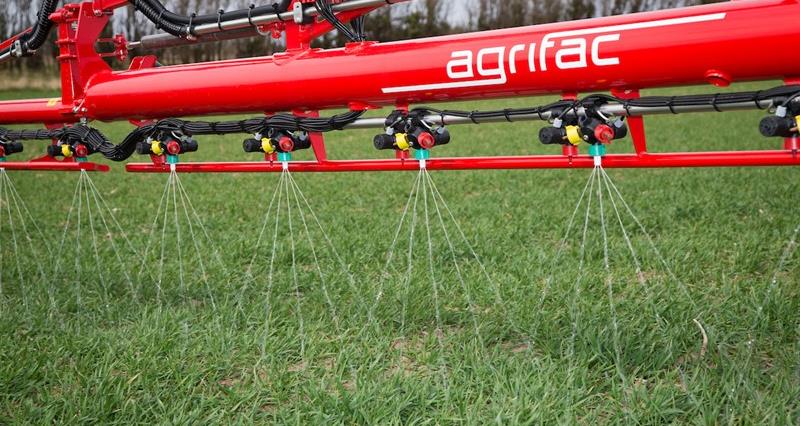Farmers in England preparing for the busy spring season must remember to use an inhibitor when applying urea fertilisers to avoid further government restrictions and help improve air quality by reducing ammonia emissions.
Industry commitment
In England enforcement under the Red Tractor Standard was launched on 1 April 2024.
- From this date solid fertilisers, blends and compounds with more than 1% urea applied any time from 1 April through to 15 January each year must use effective protection to reduce ammonia emissions.
- Farmers in England using liquid fertilisers with more than 1% urea applied any time from 1 April to 15 January each year must also use effective protection to reduce ammonia emissions.
Unprotected, uninhibited liquid fertiliser containing urea can only be applied between 1 April and the last application in autumn if agronomic justification is provided by FACTS-qualified farm personnel or advice specific to the crop has been provided by a FACTS-qualified adviser and been followed.
More information is available through a 45-minute online BASIS course which has been designed in collaboration with:
- NFU (National Farmers' Union)
- AIC (Agricultural Industries Confederation)
- CLA (Country Land and Business Association)
- AICC (Association of Independent Crop Consultants)
- NIAB (National Institute of Agricultural Botany)
- Red Tractor
The course will give farmers the knowledge and tools to reduce ammonia emissions with key points brought together in downloadable to-do lists.
How we got here
The government consultation on reducing ammonia emissions from solid urea fertilisers closed in January 2021.
In March 2023 the then Farming Minister Mark Spencer warned that, should the industry fail to introduce a scheme to reduce ammonia emissions from urea this year, Defra plan to impose regulations.
The NFU and industry partners fought hard for nearly two years to achieve a robust and pragmatic industry-led approach.
Without this, the clear proposal from Defra was an outright ban on the use of uninhibited urea fertilisers.
Using uninhibited urea saves farmers £13.8 million annually.
And its value stretches further when you consider its role in keeping the UK market competitive and minimising nutrient leaching risks associated with early season use of ammonium nitrate.

An industry voluntary approach agreed last year means farmers and growers must use ammonia abatement treatments and inhibitors to counter the risk of the government seeking to further restrict the use of urea fertiliser with tough regulation, a potential move driven by the urgent need to cut ammonia emissions in the UK.
The NFU and agricultural supply industry are committed to working in partnership to deliver substantial ammonia emissions reductions from the use of both solid and liquid fertilisers containing urea from April 2024.
For the full information on the activities leading to the launch of Option 4 read the NFU's urea fertiliser consultation – using urea after 1 April 2024.
It is imperative that the entire farming industry maintains its clear commitment to support this arrangement in the face of the ever-present threat of regulation, which is driven by the UK's legal obligations to cut ammonia emissions as part of international air improvement treaties.
What you need to know
For England, Option 4 states fertilisers containing more than 1% urea can be used when the following requirements are met:
- Protected/inhibited fertilisers containing urea can only be applied within any product use-by/best before dates.
- Protected/Inhibited fertilisers containing liquid urea can be applied with the prescribed rate of protector/inhibitor for this application and within and within any product use-by/best before dates.
- Unprotected/inhibited liquid fertiliser containing urea can only be applied between 15 January and 31 March.
- Unprotected/inhibited solid fertiliser containing urea can only be applied between 15 January and 31 March.
- Unprotected/uninhibited liquid fertiliser containing urea can be applied between 1 April and last application in autumn only if agronomic justification is provided by FACTS-qualified farm personnel or advice specific for the crop has been provided by a FACTS-qualified adviser and been followed.
In Northern Ireland, Scotland and Wales, fertiliser containing urea (solid and liquid) can be applied as per relevant legislation.
It’s important to note that liquid urea can be used without an inhibitor after 1 April where agronomic justification has been provided by FACTS-qualified farm personnel or advisers, though such justifications are limited and the farm personnel or adviser must be on the FACTS Professional Register – this means they must have accumulated sufficient CPD points each year since obtaining the original qualification.
They can provide the following justifications:
- Liquid fertiliser is incorporated by injection or within 48 hours of application by irrigation or cultivations; or
- liquid fertiliser formulations that are targeted at foliar uptake by the use of ag-chem nozzles, in accordance with their application recommendations.
While these justifications are effective alternatives to inhibitors, they are intended as a guide for making decisions and, depending on local circumstances, FACTS qualified and updated farm personnel and advisers may also take factors like surface soil moisture, crop cover, and soil type into account, although these factors may be less effective in reducing ammonia emissions and the use of an appropriate inhibitor may be more beneficial in reducing nitrogen loss.
